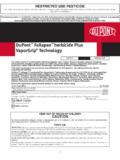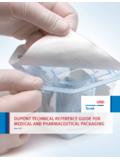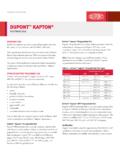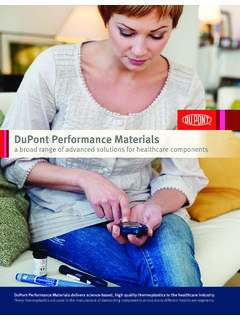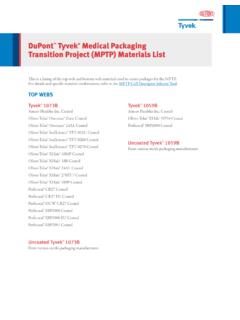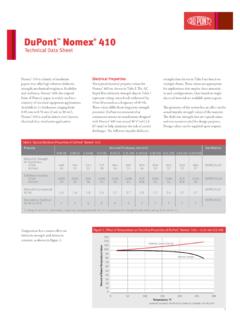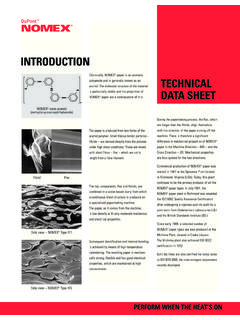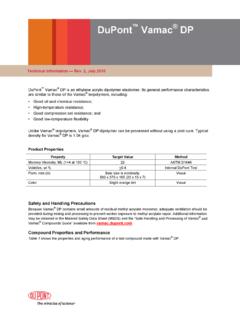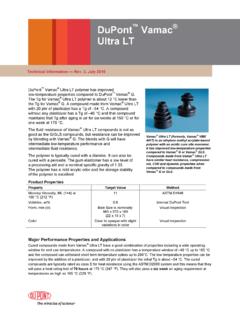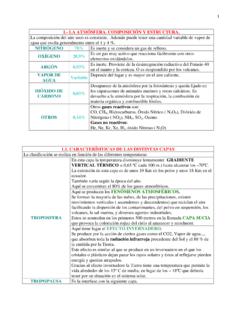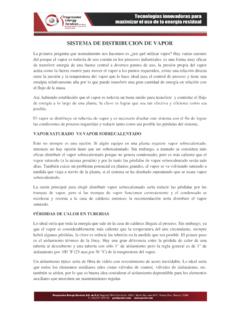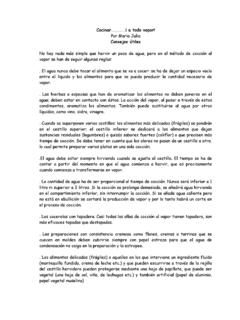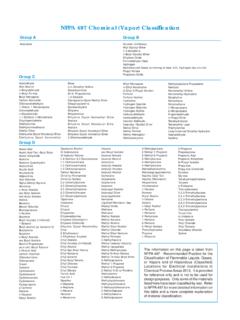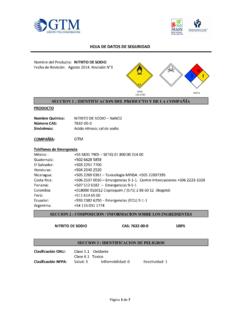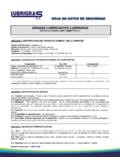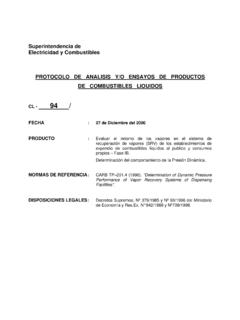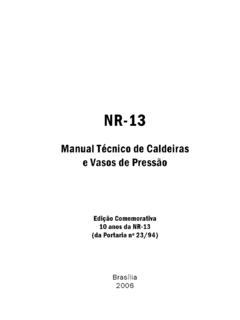Transcription of THE TRUTH ABOUT VAPOR PERMEABILITY IN …
1 BUILDING SCIENCE BULLETINTHE TRUTH ABOUT VAPOR PERMEABILITY IN high humidity ENVIRONMENTSIt is important to design wall systems that manage bulk water and moisture properly. Walls are typically designed for performance specific to the climate where they are located. Some climatic regions and rain exposure zones are more challenging than others in terms of wall system design. For example, buildings in high - humidity regions will require a robust wall design that may include various layers of defense for shedding water. Moisture management in hot/humid climates is additionally complicated by the need to balance a wall s ability to dry with its ability to manage inward VAPOR drive.
2 This has led to industry questions on the optimum water-resistive barrier VAPOR Building Enclosure Test Station (RBETS) units were designed and built to test wall assemblies and their component materials in a variety of PREPARED FOR WATER INTRUSIONR esidential walls are typically composed of several layers of materials, including the exterior cladding, water resistive barriers ( , building paper/housewrap), sheathing, studs with insulation and gypsum wall-board. No cladding system or installation is perfect; therefore wall systems should be designed to effectively dissipate any water penetrating the wall. It is not a question of if a wall will leak, but rather what is the impact on the structure when it leaks.
3 VAPOR PERMEABILITY - FINDING THE PERFECT BALANCEThe water-resistive barrier layer is designed to provide resistance to air and water which intrudes past the cladding, while being VAPOR permeable and allowing the wall to dry to the exterior. The appropriate level of water resistive barrier VAPOR PERMEABILITY in hot-humid climates, however, has been an item of contention in the construction industry. There is a perception in the marketplace that VAPOR PERMEABILITY maximizes wall drying, but in hot-humid climates must be balanced to minimize any potential moisture accumulation due to inward VAPOR drive. This may be caused by rain absorbed into cladding and subsequently driven inward as the cladding is heated by solar radiation.
4 As a result, several water-resistive barrier manufacturers have claimed low VAPOR PERMEABILITY is needed in hot/humid climates and that products, such as DuPont Tyvek building wrap, with high PERMEABILITY ratings are not suitable for high humidity environments, but that s just not the WALL SYSTEM TESTING A test-hut protocol was chosen to investigate the performance of typical wall systems under hot-humid climactic conditions. The Relocatable Building Enclosure Test Station (RBETS) is an ongoing test program that provides long term natural exposure of residential wall systems. The RBETS testing units were designed in conjunction with Building Science Corporation of Waterloo, Ontario and Somerville, MA and built to test wall assemblies and their component materials in a variety of climates.
5 The RBETS was installed in Tampa, FL (climate zone 2) in 2006, to evaluate wall performance in a hot-humid climate. The RBETS is constructed from an intermodal shipping container enabling portability to future test sites to test performance in different climates. The long sides of the container were removed and outfitted with wood stud walls that can accommodate up to 16 different, isolated wall assemblies. Performance of the wall assemblies can then be compared when facing the opposite exposure direction by mirroring the 16 wall assemblies on the opposing side of the unit. Each panel is fitted with sensors embedded throughout the wall to monitor wood moisture content, relative humidity and temperature.
6 Walls are West Orientation - Stucco: Gypsum Moisture Content Wafer Interior Finish, Exterior Face, 48"57911131517192123257/31/0712:00 AM8/5/0712:00 AM8/10/0712:00 AM8/15/0712:00 AM8/20/0712:00 AM8/25/0712:00 AM8/30/0712:00 AM9/4/0712:00 AM9/9/0712:00 AM9/14/0712:00 AMDateMoisture Content, %"7 perm WRB""12 perm WRB""54 perm WRB"Water injectionfurther challenged by a wetting system integrated behind the fa ade, allowing for testing of both environmental exposure and point-source water leakage. The units are also fitted with rain gauges, solar sensors and a weather station. The tested wall assemblies include brick, stucco, vinyl and fiber cement cladding.
7 The assemblies also included various water-resistive barriers with VAPOR PERMEABILITY ratings ranging from 7 to 55 perms. Initially, the wall assemblies were VAPOR -open to the interior conditions, but after approximately a year of operation, an interior VAPOR barrier wall finish was installed. THE RESULTS: HIGHER VAPOR PERMEABILITY DOES NOT SLOW DRYING IN high -HUMID testing showed that, when no interior VAPOR barrier was present, all walls performed well, with no significant moisture accumulation. Observations indicate that the OSB sheathing properties and its position relative to the source of water are key to the drying and moisture performance of a wall.
8 As expected, drying occurs more slowly in the winter than in the summer. In all cases prior to the installation of the VAPOR barrier wall covering, the wetting events appeared to dry completely. Differences were seen between claddings and exposures but when examined within individual claddings, there was no statistical difference in wall performance found as a result of the water-resistive barrier VAPOR PERMEABILITY . As long as there was no interior VAPOR barrier, all the wall assemblies successfully managed any inward VAPOR drive that occurred. As an example, the figure below shows moisture content on the exterior surface of the interior wall board of the West facing stucco moisture content curves fall on top of each other before the installation of the VAPOR barrier wall covering, showing no dependence on VAPOR PERMEABILITY .
9 This is consistent with reported laboratory testing showing no or only small differences in inward VAPOR drive between different water-resistive barriers. Since the VAPOR PERMEABILITY level of WRBs does not create a significant difference in the ability of a wall system to manage inward VAPOR drive, WRBs should be selected based on the overall balance of properties and the ability to provide drying to the outside in case of incidental water leaks. Contrary to misperceptions in the marketplace, DuPont Tyvek weather barrier, based on its VAPOR PERMEABILITY levels, has no lesser effect on inward VAPOR drive and it is still the best choice for managing bulk water in a wall FINDINGSThe performance of the walls during this test showed that: No significant difference in inward VAPOR drive was seen based on water-resistive barrier PERMEABILITY .
10 Unlike some of the claims made by manufacturers in their literature, no optimum VAPOR PERMEABILITY range was observed. All the walls with no interior VAPOR barrier performed well in a hot-humid climate. Despite evidence that inward VAPOR drive was occurring in these systems, moisture that was driven inward was able to be dissipated through the interior wall surface. This was independent of the WRB s PERMEABILITY Water entry from leaks, such as seen at the wall-roof interface, overwhelms any water intrusion due to solar-driven VAPOR from water absorbed into cladding materials. Therefore, maximizing drying both to the inside and outside is MORE INFORMATIONP lease contact your local Tyvek Specialist or call 1-800-44-Tyvek for more information ABOUT the Relocatable Building Enclosure Test , J.
